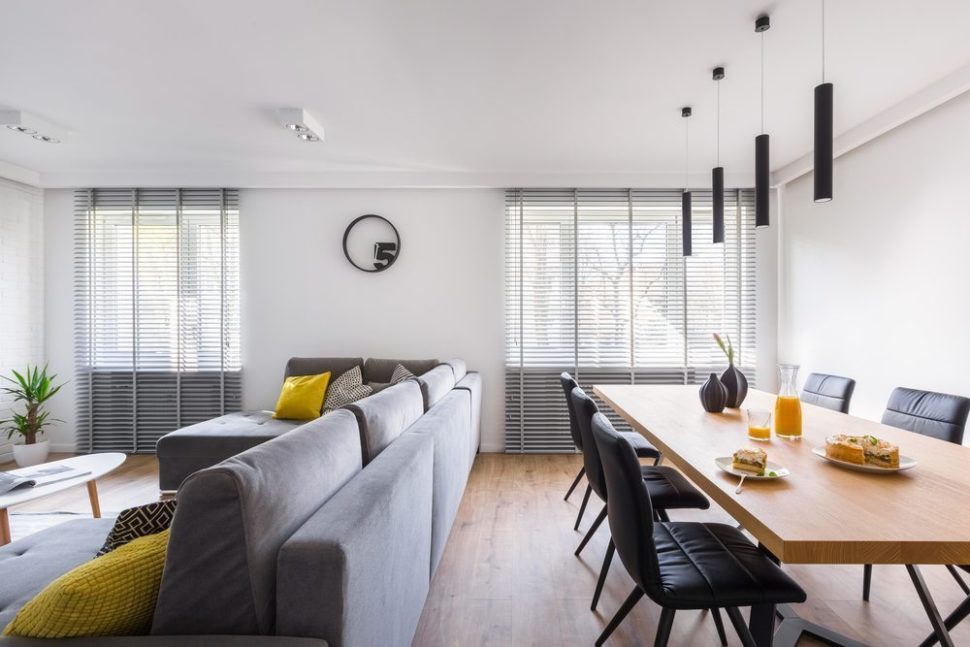As millennials build a reputation for debt, renting, and a constant subscription to the IoT, how will the places they live evolve?
Recently we published an article about Japan and how they are a living example of how automation will eventually pervade all advanced societies.
The U.S., however, is a bigger, younger nation with a larger base of employable adults.
Yet, particularly in U.S. cities where most young American professionals congregate, these “spacious skies” are filling up.
Seattle became the birthplace of the micro-efficiency and then killed it. Meanwhile, AirBnb has revolutionized shared space despite a dump truck full of lawsuits from many different cities.
Nevertheless, it’s hard to ignore the fact that the subdivided, private, planned communities of the 20th and early 21st centuries are giving way in the U.S.
The only question that remains is: what will U.S. communities look like in the future?
Future Communities Will Look Like This:
1. Communal Living
In a wonderful article by Molly McHugh for The Ringer, we take a look at communal living solutions in the U.S.’s biggest, most lively cities, including New York and the San Francisco Bay Area.
These cities are important to the communal living movement because they are epicenters of development for the tech community. Typically, this community is filled with younger professionals that rent because of astronomical homeownership costs.
Because a typical San Francisco area one-bedroom apartment can easily cost between $3,000 and $4,000 USD per month, many of these renters look for microhousing.
For a multitude of reasons, these renters are all in similar predicaments. So, why not share the space and create a community around shared experiences?
It is in this spirit that microhousing communal living has evolved and will likely be a bigger part of urban living in the future.
The Nook, an Oakland, California-based microhousing apartment complex with communal shared spaces, offers 180-250 sqft. apartments for around $1,600 USD per month.

As you can see, the space is small but livable. It’s not the modernist American ideal: no place for the golden retriever or private yard to play catch with “son.”
The Nook encourages sharing the communal spaces, too, and even throws parties for the residents.
As McHugh is told by Christian, who represents The Nook, “We don’t have a specific age range, to be honest. We comply with fair-housing laws, so whoever qualifies, whatever age, race, whatever, if you meet the application criteria you can live here.”
But, for now, it’s hard to see this housing avenue be explored by any other than young adult professionals.
Common is another communal housing development that has evolved in response to the housing crisis following the sudden growth of the urban tech community. In fact, Common has a presence in New York City, Washington D.C. and San Francisco.
One-bedroom apartments in Oakland, CA cost around $3,100 USD per month.Click To TweetTheir model is similar to that of The Nook, but with a more polished approach.
In the Crown Heights neighborhood of NYC, for example, you can find a bedroom with shared kitchen, living space, backyard, and bathroom for $1,475 USD a month. That includes weekly cleaning and a fully furnished room. For around $400, you can bundle all of your bills including Internet.
These housing systems are brand new, and how successful they become in actually instilling strong communal ties remains to be seen. For now, however, they alleviate the problem of young professionals being unable to afford to live near their city jobs.
2. Integrated Energy
Already people are starting to practice net metering, a practice where owners of solar, geothermal, or wind energy installations feed excess power back into their conventional power grid.
As we’ve discussed before, this practice actually conserves energy when compared to people that try and store their harvested energy in batteries.
Trade fairs like Hannover Messe are actually working to create integrated energy systems for our future communities. These systems will leverage smart technologies and renewable energies to create the efficient, sustainable energy systems of the future.
Future communities, by better understanding the total input and output of energy in their living systems, will be able to better power, recycle, and manage their energy grids.
Communities like these are already being developed. Be sure to check out our piece on Babcock Ranch, a new community built from the ground up with renewable energies.
There are also good examples of existing cities that have made major investments to change their energy infrastructure.
3. Barter Systems
Bartering is how we’ve conducted the trading of goods and services even before we started using monetary exchanges. Forbes even thinks the practice of bartering can help small businesses grow today.
Yet, more practical examples of the barter system of future communities are already here. Just take a look at Craigslist and classified marketplaces on Facebook.
As cryptocurrencies continue to rise in use and prominence, it makes one wonder how the future of goods and services exchange will change as digital currency becomes even more prevalent.
What if the idea of a Universal Basic Income catches on in the U.S.? From where we’re sitting, we think that might take some time. But if future communities are built around people who earn a Universal Basic Income and apply that to the most critical, basic necessities of life, what else will they use to trade? Will people once again be able to offer their more menial labors or particular skills in order to acquire something they desire?



















Comments (0)
Most Recent